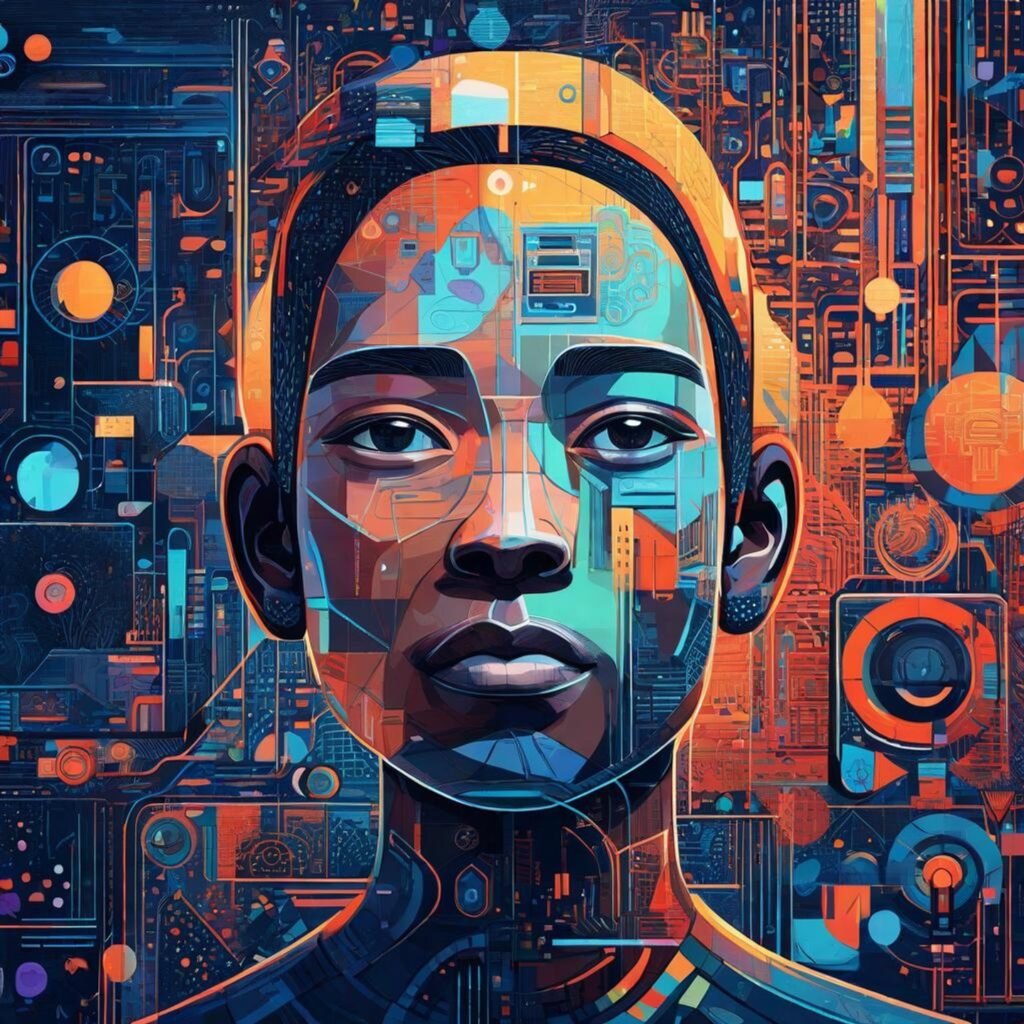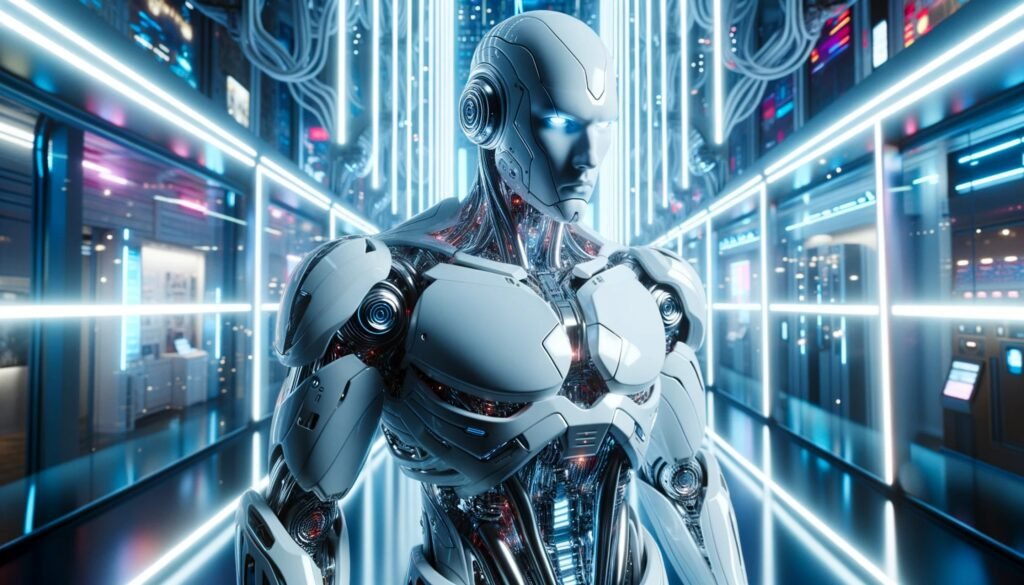Introduction: The Rise of AI
Remember when artificial intelligence was the stuff of sci-fi novels and far-off futures? Well, it’s now just another Tuesday. Right from playing a game of chess with a computer in the 1950s to Siri guiding us to the nearest coffee shop just in the nick of time, AI has come a long way.
Significant milestones in AI’s journey have included IBM’s Deep Blue defeating a chess world champion in 1997 (a defining moment that sent everyone’s jaw south), Google’s AlphaGo besting a professional human Go player in 2015, and let’s not forget OpenAI’s or Chat GPT’s language model, GPT-3 astounding us all by generating human-like text.
This whirlwind tour of AI’s high points underlines its incredible growth rate, causing massive disruptions across diverse sectors like finance, healthcare, and manufacturing. As we swirl our way into 2022, let’s sit down, grab a cup of tea (or coffee), and explore what the AI landscape might look like.
Trend 1: Increased AI Transparency
Now, let’s turn a corner and chat about something called ‘AI transparency.’ Picture trying to navigate a dense forest with a blindfold – sounds perilous, right? That’s kind of what it’s like using AI models that are, as we say, ‘black boxes.’
Increasing AI transparency is all about lifting that veil and making AI models less enigmatic and more understandable. It’s about ensuring AI systems can explain their actions and results, making AI a responsible and ethical team player.
Ongoing initiatives, like explainable AI (XAI), work towards deciphering the inner workings of complex AI models. And trust me, for businesses and individual users, this could mean no more blind navigation. If AI is going to be our co-pilot, it better start speaking our language.
Trend 2: AI in Cybersecurity

The protective knight in shining armor against the notorious online dragons. AI is bustling its way into the cybersecurity arena, bustling with both promise and challenges.
Artificial intelligence and machine learning are offering new ways to identify threats and protect systems. Recent advancements like AI-powered anomaly detection, behavioral analytics, and predictive models are significant game-changers. They’re like Sherlock Holmes, but for your data – always alert and ready to pounce on any suspicious activity.
However, with great power comes great caution. AI cybersecurity solutions will have to navigate hurdles such as data privacy concerns, system vulnerabilities, and ever-evolving cyber threats. But hey, no one said being a Sherlock of cyber threats was easy.
Trend 3: AI-enhanced Automation

Automation? Been there, done that. AI-enhanced automation? Now, that sounds fresh.
AI is now the secret sauce to supercharge automation. Industries far and wide, from manufacturing to customer service, are ripe for experiencing this new wave of intelligent automation.
Imagine factory robots learning from their mistakes (much like we do after tripping over that darn coffee table), or chatbots getting better at understanding our caffeine needs with every interaction. It’s exhilarating, but it does make you wonder what it might mean for the global job market. The reality is, certain jobs would indeed become obsolete. But hey, wouldn’t it be exciting to see new roles crop up that we can’t even imagine today?
Trend 4: Expanded AI Accessibility
Think AI is just for the big tech honchos? Well, think again. One trend charging forward is the democratization of AI, putting the power of AI into the hands of small businesses and even individual users.
“AI-as-a-Service” platforms are much like an “all you can eat” buffet, offering tailor-made AI solutions to those who need it. This expanded accessibility could stir up new solutions and innovations, fostering a healthier, more diverse tech ecosystem. Imagine underfunded schools using accessible AI to improve teaching methods, or small businesses competing on the same playing field as their gigantic counterparts. Impressive, isn’t it?
Trend 5: AI in Healthcare

Last but not least, let’s talk about medicine – the healthcare sector. AI is beginning to play doctor (or at least a useful nurse) in exciting and life-altering ways.
AI is getting good at diagnosing diseases, often matching or even surpassing human doctors’ accuracy. Who could forget when Google’s AI system outperformed human radiologists in detecting breast cancer from mammograms? But it’s not all about stealing the show. From predictive analytics in patient care to streamlining hospital operations, AI is dovetailing with human professionals for effective results.
The future looks exciting, with AI expected to make strides in telemedicine, mental health support, and even robotic surgery. Gives a new meaning to the phrase “an apple a day keeps the doctor away,” doesn’t it?
Conclusion: The Future of AI in 2022 & Beyond

So, what do we have in the AI cookie jar for 2022? More transparency, smart defenses against cyber threats, AI-powered automation on steroids, democratization, and cutting-edge healthcare solutions.
These trends give an exhilarating peek into the potential of AI to create real, lasting changes in our world. As with any potent technology, it brings alongside a wave of opportunities and a set of burning questions. It’s safe to say, as we progress further into 2022 and beyond, our strapping AI is set to make more headlines and redefine ‘normal’ for us.
Frequently Asked Questions (FAQ)
Q: What are the main safety concerns regarding AI implementation?
From privacy invasions to fears of AI ‘taking over the world,’ AI implementation isn’t devoid of safety concerns. Balancing AI’s potential with the ethical, privacy, and security implications is a challenge we must face squarely.
Q: How can small businesses ideally capitalize on AI advancements?
AI-as-a-service platforms offer small businesses a chance to benefit from AI without developing their own AI models. From improving customer service with AI chatbots to refining business operations, the AI world is their oyster.
Q: In what ways might AI-based automation affect current job markets?
While AI-based automation could lead to some job displacement, fear not! It could also pave the way for new roles like AI ethicist, AI trainer, or AI maintenance worker. So, it’s not all grey skies.
With that, I’ll leave you with this – in the world of AI, the only constant thing is change. And a whole heap of fascination. Buckle up; it’s going to be a wild ride!